YOUR FRACTIONAL CMO
What is a Fractional CMO?
A Fractional CMO is an experienced marketing executive who will manage your marketing team and ultimately be responsible for ALL of your marketing needs.
What does Fractional CMO do?
A Fractional CMO will create your marketing strategy, map your customer's journey and plan for product or geographical expansion. They will slao hire and train your team members while managing KPIs so your marketing makes you money.
How does Fractional CMO do it?
While there are MANY various factors that go into how a Fractional CMO will provide you with the marketing expertise, it starts with building the Three Essential Pillars of EVERY business's success.
Pillar 1: Branding
Building a solid brand that lasts the test of time relies on creating an emotional connection with your customers and the public at large.
Branding starts with positioning:
Your company’s position in the marketplace is determined by how your brand is perceived in the world. It is a calculated set of fundamental steps beginning internally and then moving outward in concentric circles.
First is establishing the company’s mission and vision.
Your Mission Statement: (Purpose)
Your mission statement clarifies what you want your company wants to achieve, who you seek to support, and why you want to support them.
Your Vision Statement: (Future)
Your Vision statement describes where your company wants its community or the world to be as a result of your company’s offerings.
—
Example Mission Statements:
Warby Parker: To inspire and impact the world with vision, purpose, and style.
Patagonia: Build the best product, Cause no unnecessary harm, Use business to protect nature, Not bound by convention.
Disney: To entertain, inform and inspire people around the globe through the power of unparalleled storytelling.
Example Vision Statements:
LinkedIn: Create economic opportunity for every member of the global workforce.
Southwest: To be the world’s most loved, most efficient, and most profitable airline.
Teach for America: One day, all children in this nation will have the opportunity to attain an excellent education.
Establishing your company’s mission and vision statements is just the beginning of what it takes to build your brand. Next comes the importance of instilling that messaging into EVERYTHING your company does!
From how your staff answers the phone, to the cleanliness of the truck that deliver your products, it’s ALL marketing, and it has a direct impact on your brand.
If you only remember one thing from this information, remember that if YOU don’t position your brand in the marketplace, your competition will do it for you, and you won’t like where they put you.
Pillar 2: Acquisitions (New Customers)
Now that your company has a clear mission and vision set, it’s time to attract new customers. After all, a beautiful brand alone won’t pay the bills.
In addition to playing the advertising arbitrage game of finding marketing channels where you can spend $1 to make $3+, the most cost-effective way to do this in today’s economy is a well designed affiliate/influencer program.
Affiliates and influencers are like trusted advisors who can lead potential customers to your brand.
The real beauty is they only get paid for the results (revenue or CPA [cost per action]) they are personally responsible for generating. That’s a win-win. And let’s face it, if you don’t work with them and pay them a fair CPA or rev share, they’re just going to do it with your competition.
Pillar 3: Loyalty
Congratulations, you’ve attracted some customers! Now, let’s not lose them like socks in the laundry. Customer retention is where your company’s profit is, and a high quality well thought out loyalty program is the key to your success.
Loyalty goes WAY beyond a transactional “punch card” approach (buy 9 sandwiches get the 10th one free). It’s about creating and maintaining and emotional connection between your customers and your brand.
Your loyalty efforts and the program you create should captivate, engage, excite, and reward your customers. It should be a playground of perks, points, and privileges that make your customers feel special. That’s the emotional connection. It’s a way of saying, “We appreciate your loyalty, and we want to make your journey with us even better.”
A better way to think about it is to see how you personally feel about the brands you buy from as a consumer, and why.
Example of Great Customer Loyalty:
Apple: While not really a “loyalty program” per se, the loyalty of Apple customers is nothing sort of remarkable. Why? Customer Service. Sure they make great, cool looking and well functional technology, but to be able to get a human being on the phone at a $2 Trillion company and get the actual answers you need to resolve your issue, is nothing short of remarkable.
Starbucks: Their rewards program is one of the most successful customer loyalty program examples. Yet, it’s super simple… customers buy coffee with an app and receive stars (points).
Using gamification has been going on for decades in the casino industry’s loyalty program space, and for coffee, it’s even easier.
Amazon: Prime is a phenomenal loyalty program built on the simple fact of human nature desire to spend less. No one like to pay for shipping, and now you don’t have to.
But what else can you learn from another Trillion dollar company… They are making money with prime in and of itself. Running the numbers on the average person’s orders over the course of a year, and factoring in the shipping costs, there is profit built into the Prime subscription.
The bottom line is your loyalty efforts should make your customer feel a strong sense of belonging to a community. People do business with people not brands. So the people behind your brand (customer care, marketing, HR, heck even the street sweepers [think Disney]) ARE your brand. Make sure they know it, and they are intimately familiar with your company’s mission and vision.
Pivotal Zen can walk you through all these steps, and more, for optimal traction & success.
Past & Current Clients










